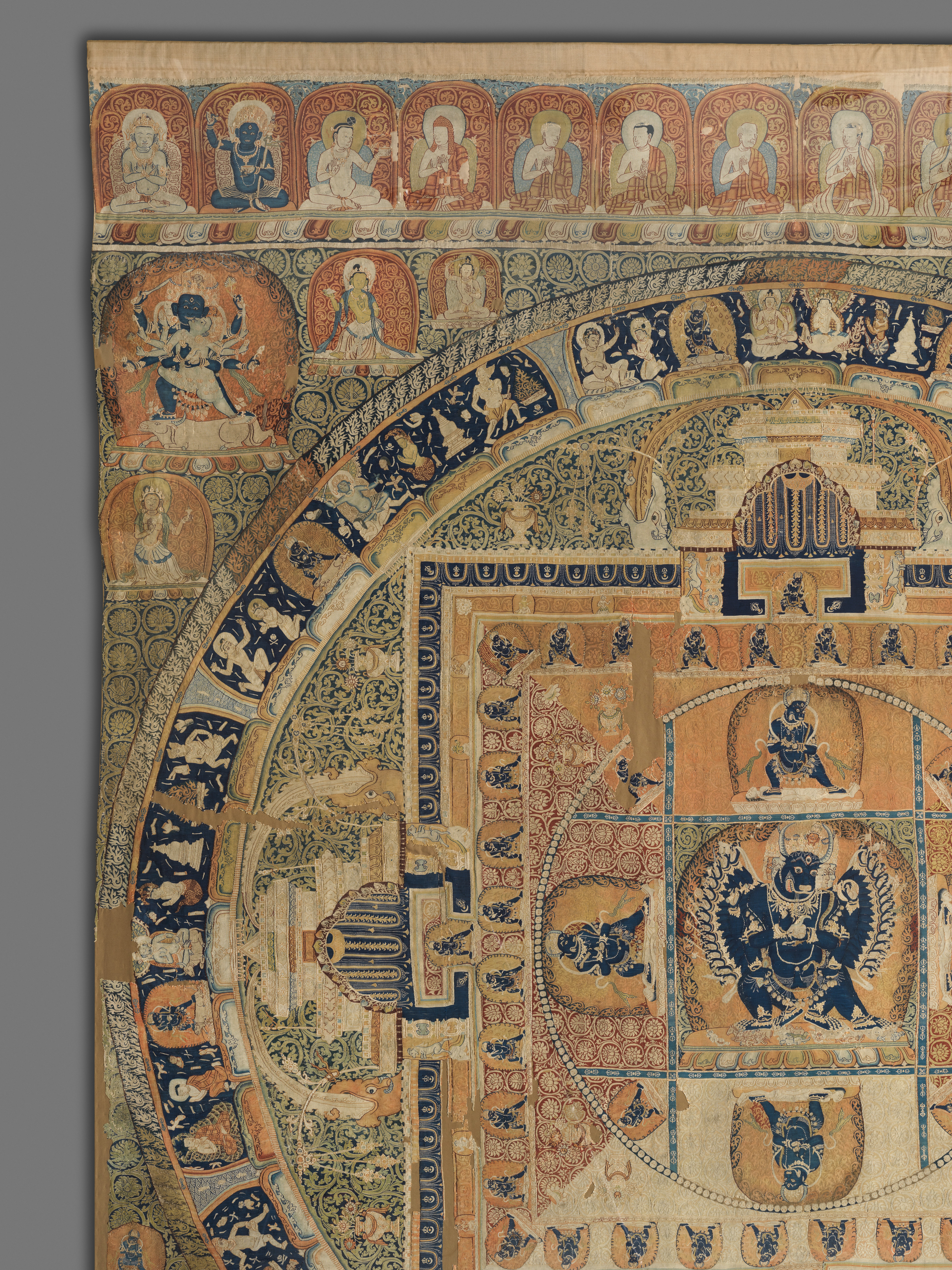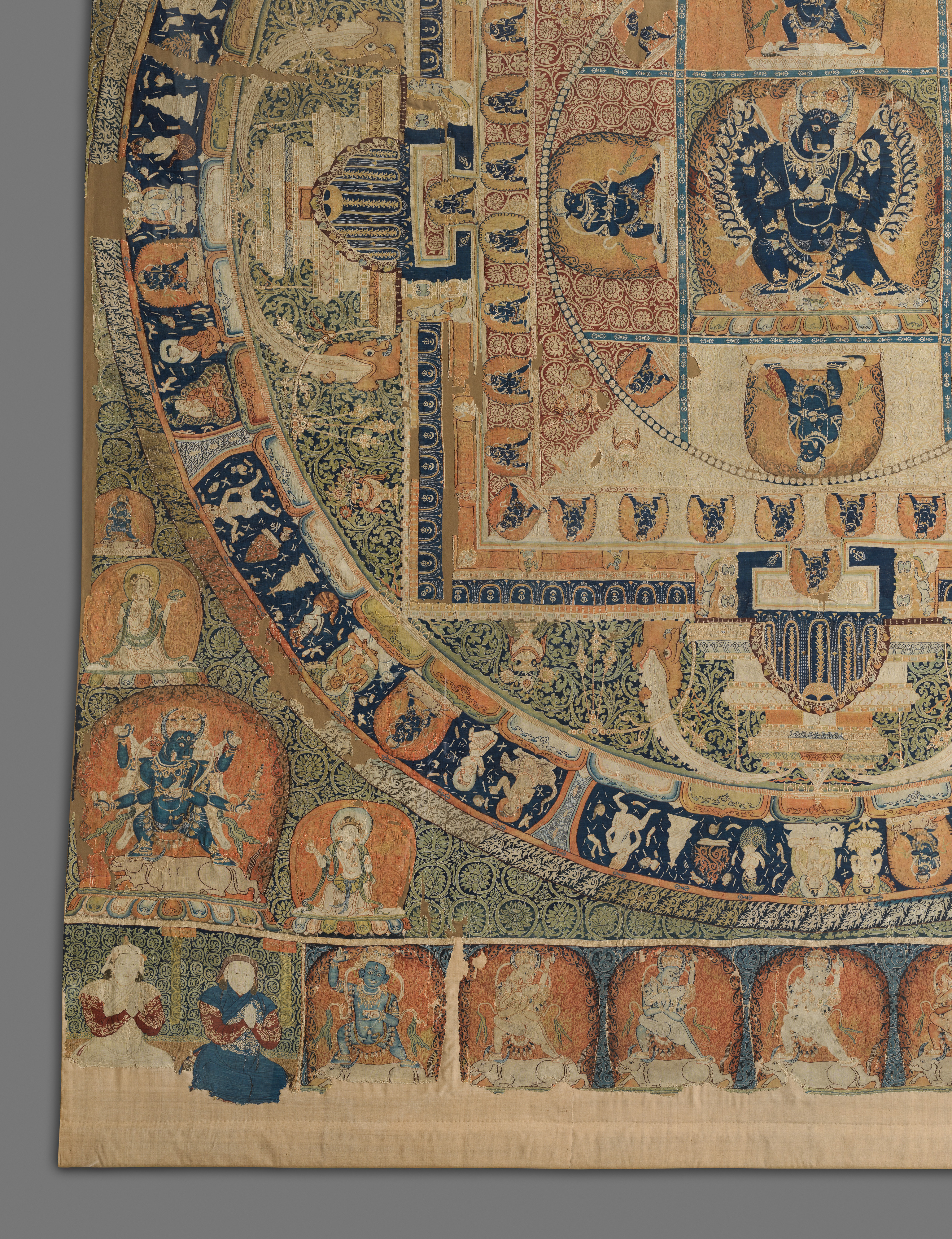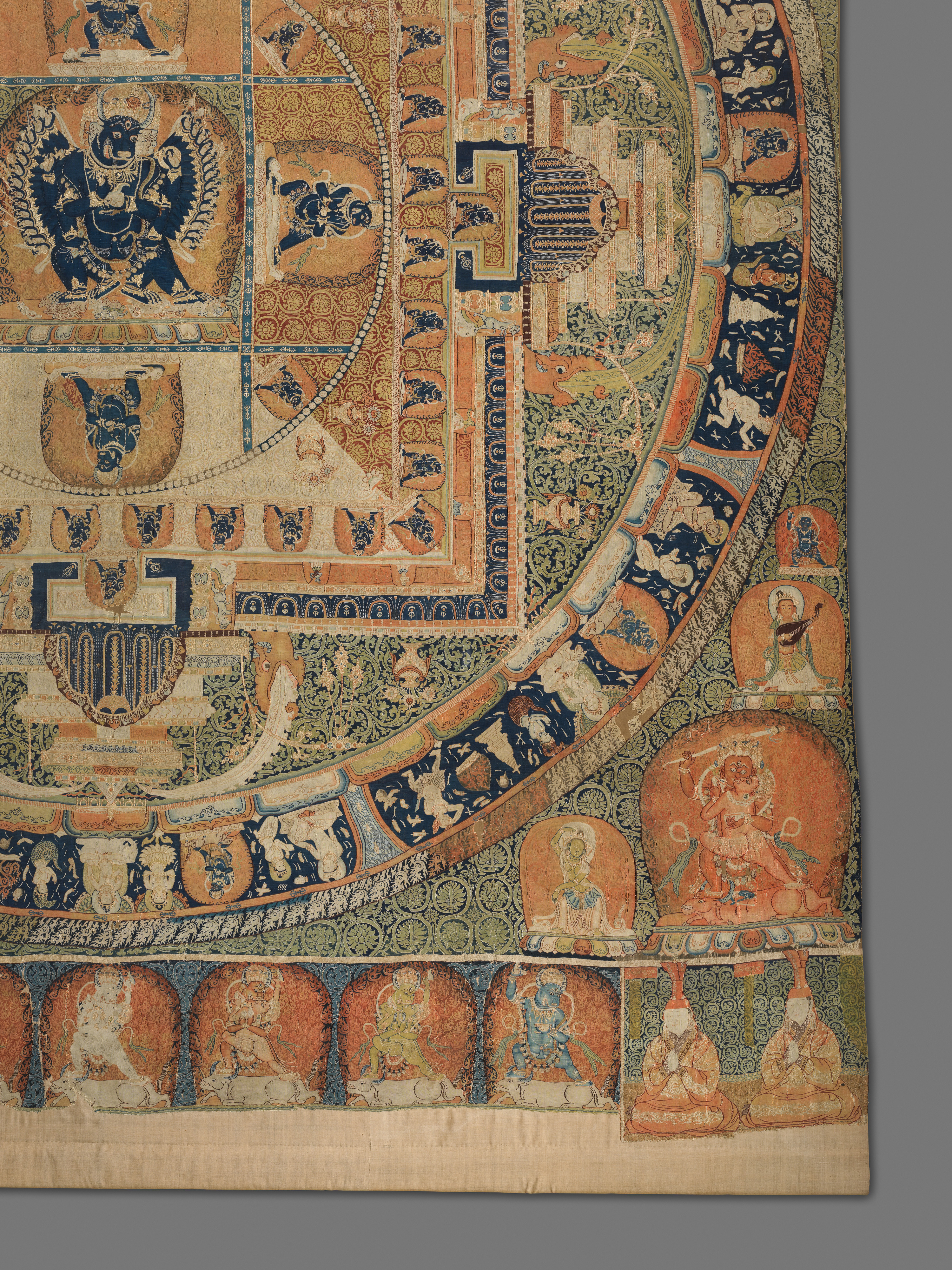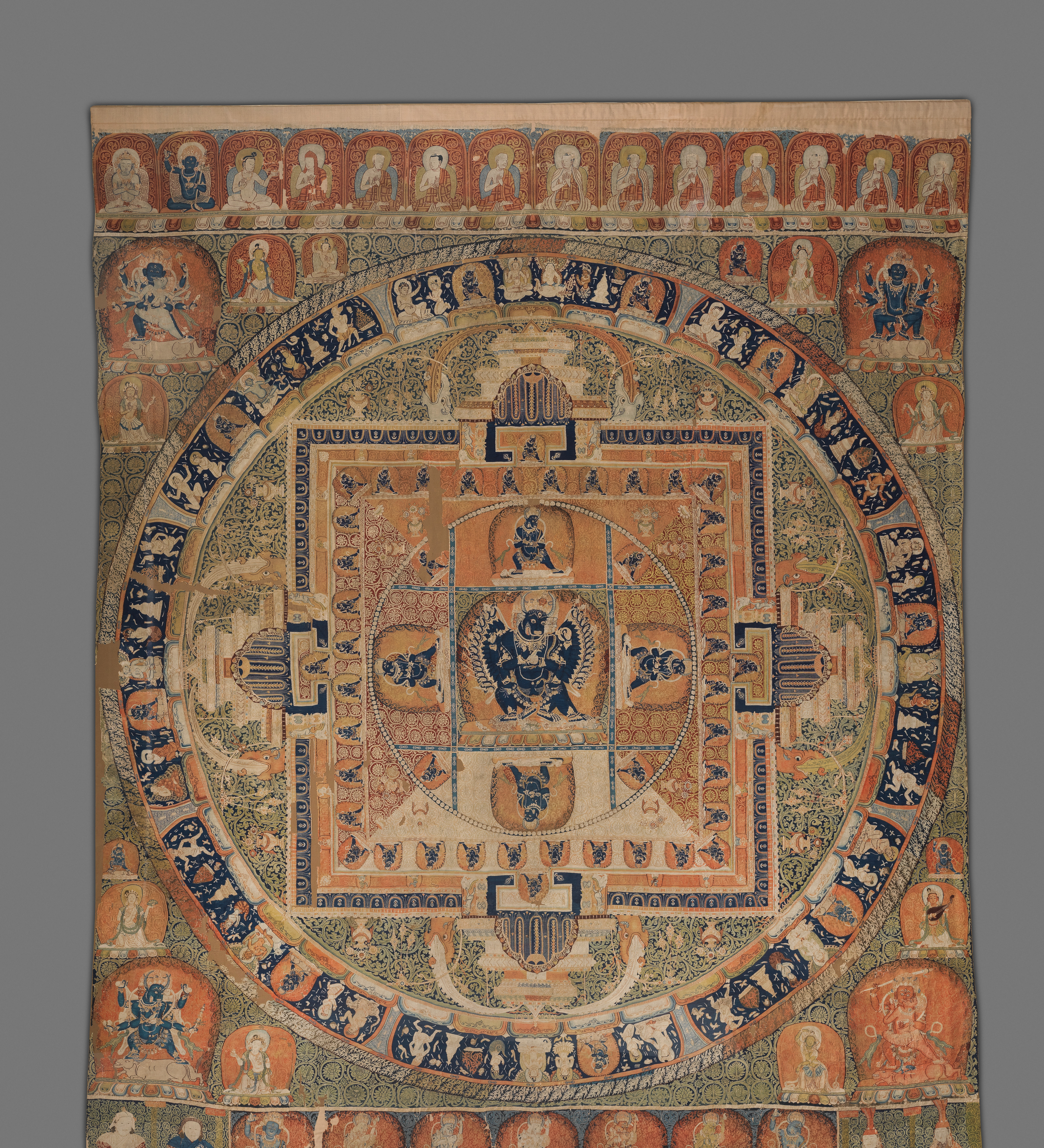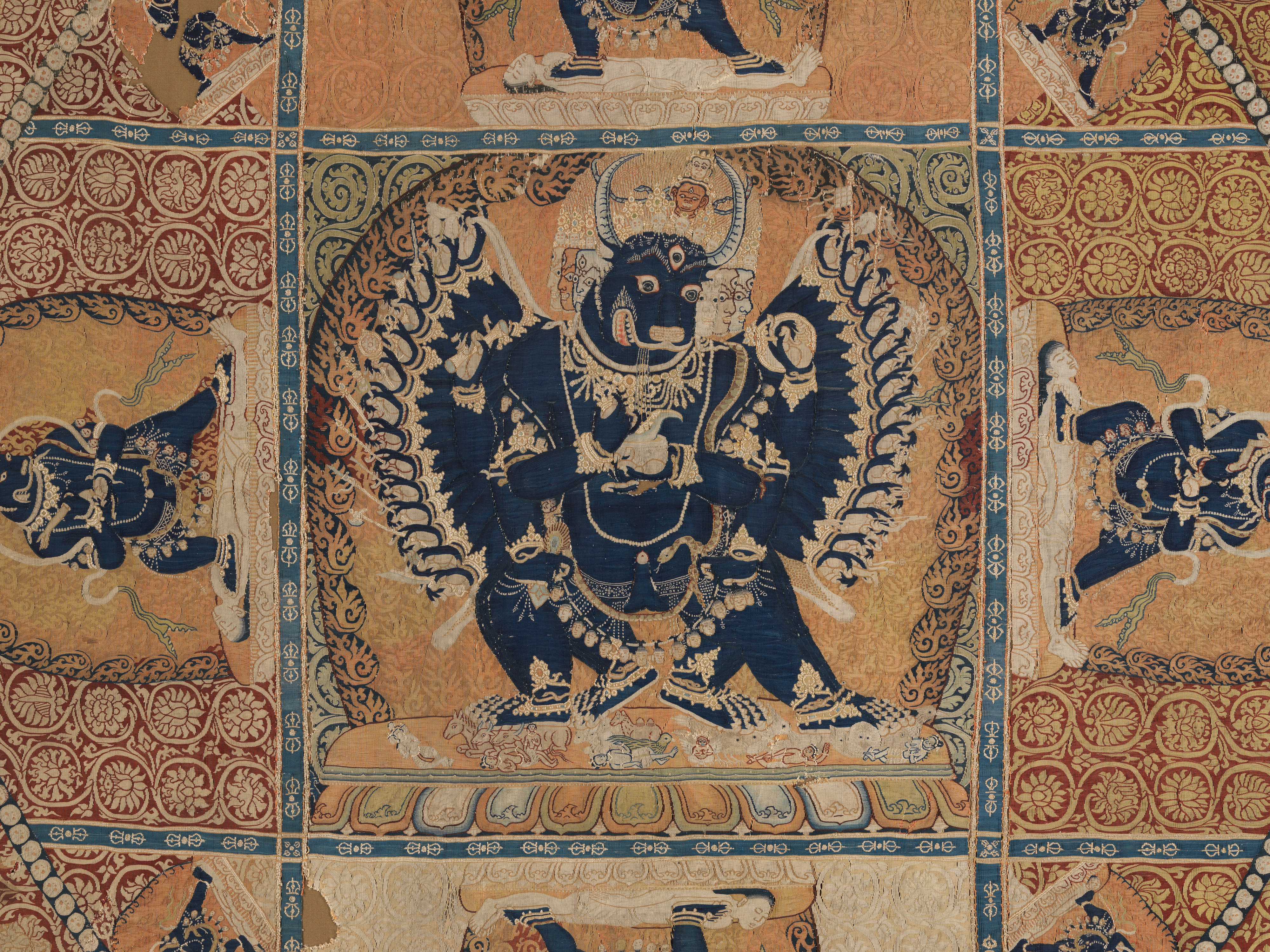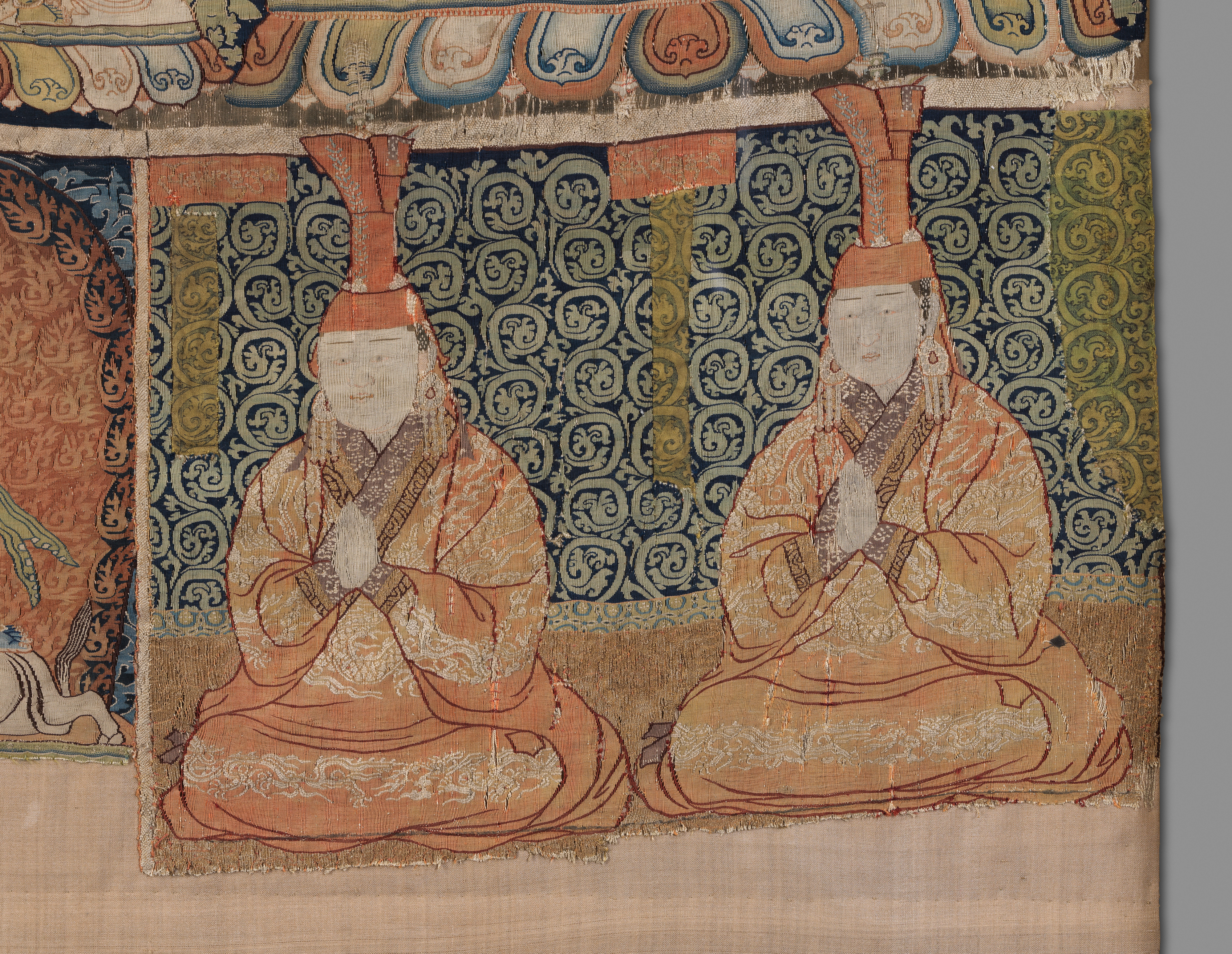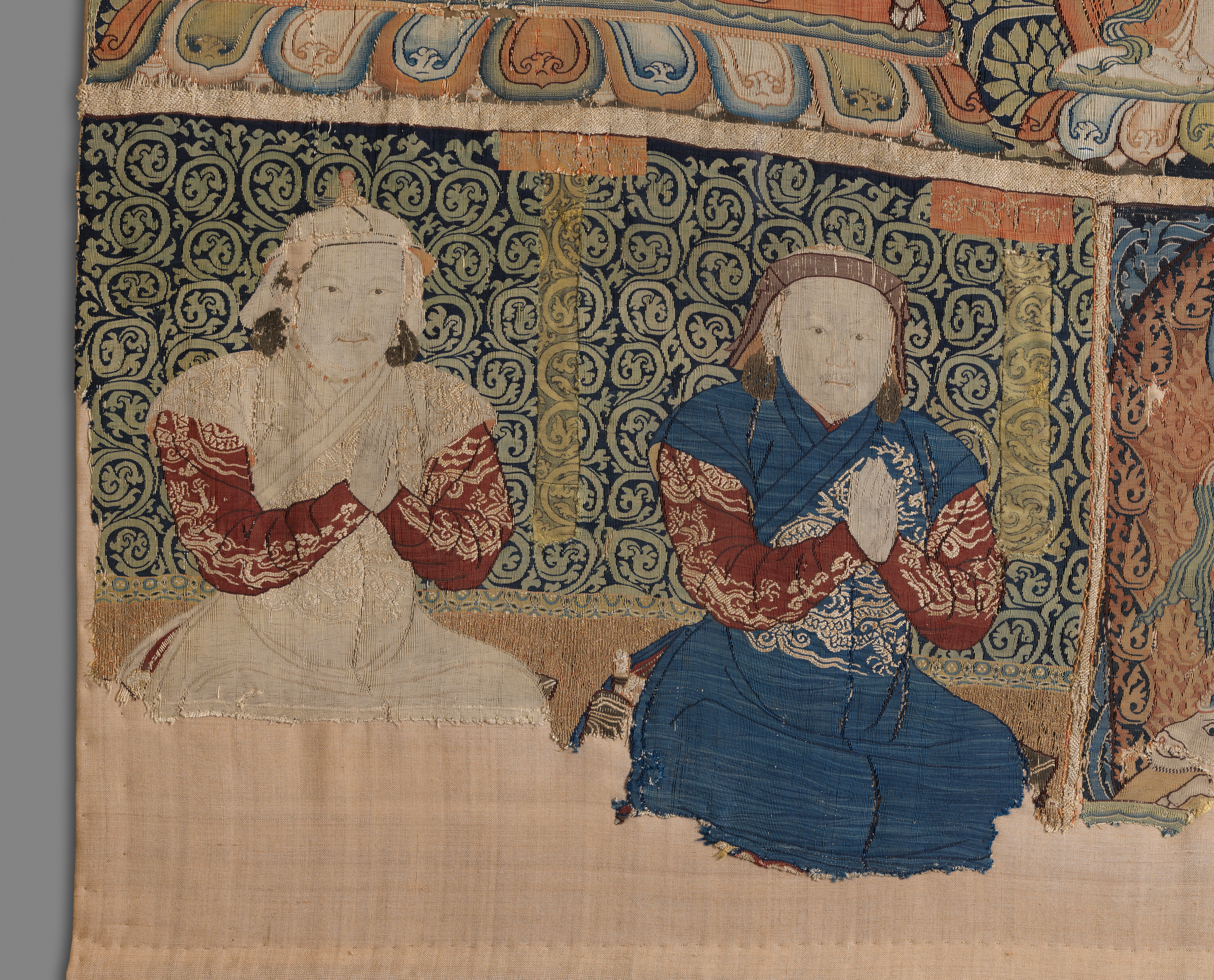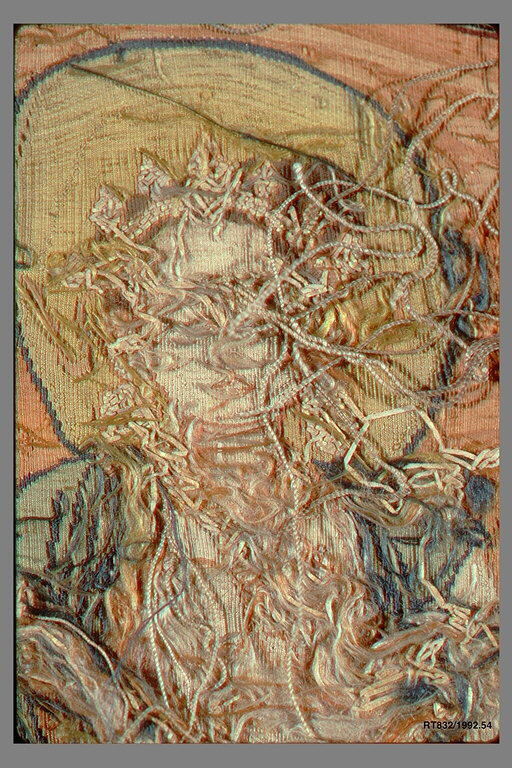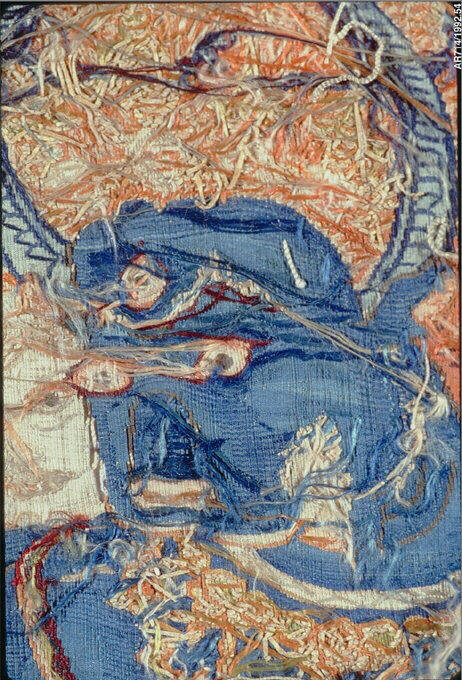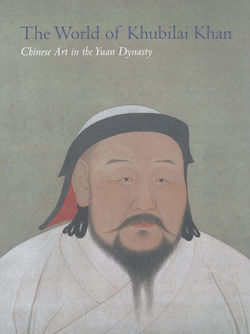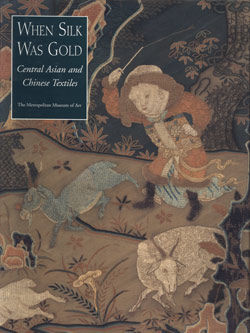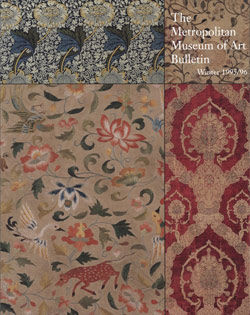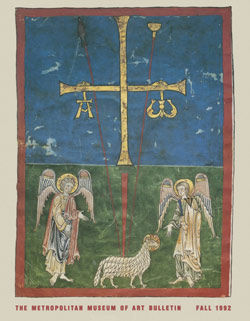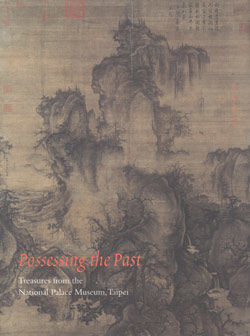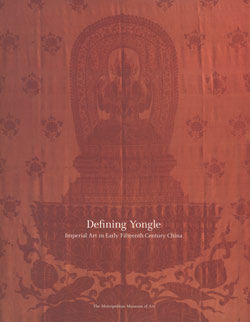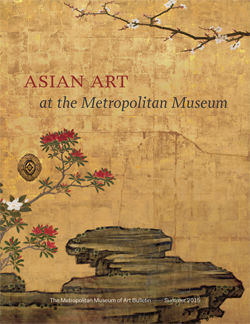Vajrabhairava mandala
Not on view
In the fourteenth century, China was ruled by the Mongol Yuan dynasty, established by Khubilai Khan (1215–1294), grandson of Genghis Khan (1162–1227). The Mongol rulers were adherents of Tibetan Buddhism, and they were also lavish patrons of luxury arts, including sumptuous woven silk textiles. This is an example of the fanciest type of textile, kesi, in which each colored thread is woven individually to form an image. The central focal point is the fierce deity Vajrabhairava, the buffalo-headed, blue-skinned conqueror of death, a focus of devotion for the Yuan emperors. At the bottom are portraits of the patrons, from left to right: Tugh Temür, the great-grandson of Khubilai Khan, who briefly served as emperor of the Yuan dynasty, his older brother, and their wives.
#7353. Mandala of Yamantaka-Vajrabhairava
Due to rights restrictions, this image cannot be enlarged, viewed at full screen, or downloaded.
This artwork is meant to be viewed from right to left. Scroll left to view more.


